|
St Mary-le-Port CITY Bristol |
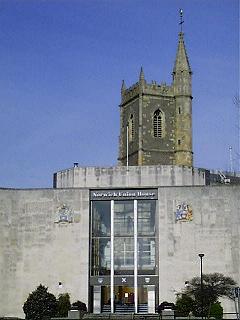 |
Most Bristolians and visitors will recognise the picture above as the (former) Norwich Union Building by Bristol Bridge which with its neighbour The Bank of England (later Lloyds Bank) seems to wrap itself around a church tower. Built in 1962 it not only occupies a prime site, but also the likely site of the original settlement of Bristol. Since World War Two destruction of the medieval heart of the city through bombing the site had remained vacant for 15 years, and it seems today that these buildings face an uncertain future. What replaces them and how the site incorporates St Mary-le-Port will be a huge challenge for architects.
The church of St Mary-le-Port was excavated in 1962 and found to be older than expected, probably Saxon. It was always thought that St Peter across what is now Castle Park was the first church in Bristol, an early Norman foundation. It gave its name to the narrowest of streets running from High Street to St Peter's church and Mary-le-Port Street was the heart of the pre-war shopping centre, with largely late medieval half-timbered houses. It was entered from this street, but largely hidden, its presence announced by a clock which stood out into the street above the archway leading to the church door. To the south was a small enclosed churchyard, from which most surviving pictures of this church were taken.
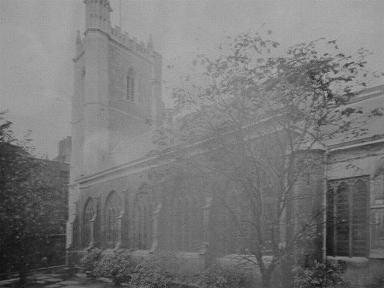 |
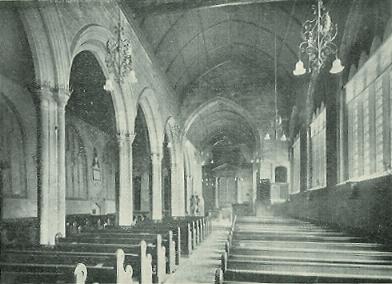 |
The church was almost entirely rebuilt in the C15, with a proud tower which has a prominent Bristol Spirelet over the staircase. A long nave without clerestory was lit by an impressive row of large Perpendicular four light windows. A dark north aisle had similar blocked windows due to the close proximity of shops in Mary-le-Port Street. The chancel was slightly off centre to the nave and there was a flight of steps leading to the pulpit on the south side as well as the organ chamber and vestry on the north side. There was no east window, the wall filled by an C18 reredos.
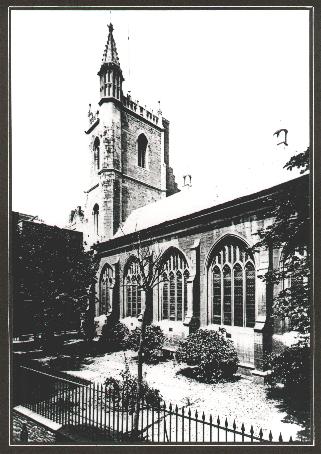 |
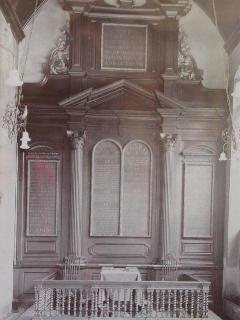 |
Among its treasures was a brass eagle lectern of 1683 formerly in the cathedral but sold by them as scrap metal in 1802, and purchased by St Mary le Port church. The north door was made in 1633.
The church fell victim to bombing in 1940, and its destruction was near-complete. Pictures immediately after show the tower and a precarious section of the nave's south wall which was soon demolished too. The lectern was battered but was removed and stored for many years in the crypt at St John-on-the-Wall. The area was badly negelected after the war and served as a car park for many years, and as a schoolboy in c1965 I can remember clambering into the ruins of this church among the undergrowth. When Castle Park was created in 1978 the remaining walls were conserved and some of the trees which had grown up here allowed to remain!
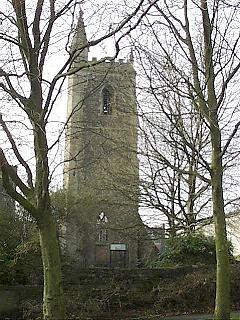 |
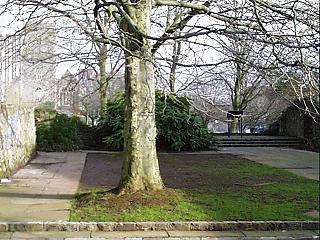 |
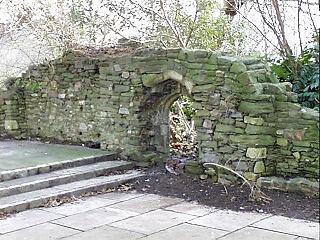 |
The tower arch is blocked in an ugly fashion with concrete and low walling is preserved, largely featureless although the small priest's doorway survives in the chancel. To the north a cellar of indeterminate date is exposed to view covered by a grille. The tower looks sad to me, as if about to shed a tear.
Page created 25th March 2005